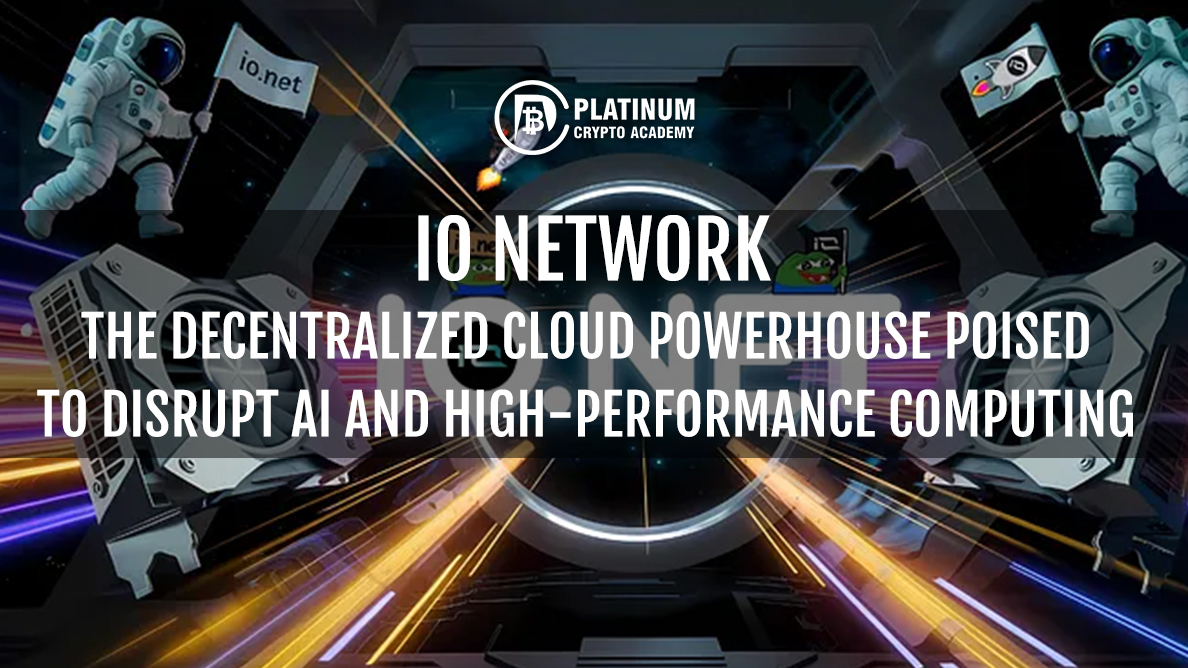When I first heard about IO and its Internet of Things (IET) project, I was intrigued. Decentralized GPU access for AI and computational needs? It sounded like something from a sci-fi movie. But after diving deeper into IO’s ecosystem and learning about what IET offers, I started to see its potential to transform both the crypto space and industries that rely on intense computing power. If you’re fascinated by the intersection of AI and blockchain, this project is worth paying attention to.
IO Network: Redefining Decentralized Cloud Services with IET
Here’s the big idea: IO aims to create a global network of decentralized cloud services, and IET is one of its key innovations. IET leverages unused computational power from GPUs around the world, pooling resources in a way that makes high-performance computing accessible to anyone, anywhere. Think of it as Airbnb for compute power. For those of us in the crypto space, it’s easy to get wrapped up in DeFi and NFTs, but IO is something entirely different—it’s about building foundational infrastructure for AI and computational tasks.
The demand for GPU power is exploding due to AI, gaming, and other high-performance applications, but traditional centralized solutions are often cost-prohibitive. IO’s approach flips that model on its head, making GPU power accessible without relying on a centralized provider. And unlike other cloud solutions, IO’s network is decentralized, meaning it’s secure, more affordable, and accessible globally.
What Sets IO Apart: Real-World Utility and Blockchain Advantages
Some might wonder why we need a decentralized solution for GPU power when traditional cloud providers like AWS or Google Cloud already exist. But that’s the genius of IO and IET: they take what works in centralized GPU services and strip away the limitations. Here’s why IO’s model matters in real-world applications.
- True Decentralization and Trustless Access: With IO, there’s no central authority controlling the network. Anyone with a compatible GPU can contribute compute power, and developers or businesses can access this power directly. This model democratizes access, providing a trustless, decentralized alternative to cloud giants.
- Incentivized Network Participation: IO leverages blockchain to incentivize users. GPU owners earn rewards for contributing their resources to the network, creating a passive income opportunity while expanding available compute power. Traditional cloud providers, on the other hand, don’t reward users—they charge them. IO’s model flips this by rewarding contributors, creating a win-win for both users and providers.
- Cost Efficiency: With IO, competitive pricing mechanisms ensure that users aren’t at the mercy of market surges. In traditional cloud services, GPU rental costs often skyrocket, especially during high-demand periods. With IO, users benefit from decentralized market dynamics, which can keep costs low even when demand is high.
Real-World Applications: Why IET Could be Transformative Across Industries
The potential for IO’s technology goes well beyond crypto. High-powered compute capabilities are essential for applications in fields like healthcare, finance, and AI research. But in traditional setups, access is costly and often restricted by centralized providers.
Consider healthcare, for example. Diagnostic models that rely on image recognition, like detecting early signs of disease, need significant computational power. With IO’s IET network, healthcare providers and research institutions could access affordable GPU resources, potentially accelerating breakthroughs in diagnostics and personalized medicine. Similarly, in finance, high-frequency trading algorithms need efficient, high-powered computation—another area where IO’s decentralized cloud could be highly beneficial.
Security and Privacy with Zero-Knowledge Cryptography
Security is another area where IO shines. Using zero-knowledge cryptography, IO allows users to access GPU power while maintaining privacy. In traditional cloud solutions, user data often passes through centralized servers, which are vulnerable to breaches. But with IO’s decentralized approach, data doesn’t have to be stored on any central server, reducing the risk of hacking.
For industries handling sensitive data, such as finance and healthcare, IO’s privacy features are invaluable. Zero-knowledge technology provides secure, private access to resources, allowing companies to use the network confidently without fearing data exposure.
Why Now? The Perfect Timing for IO’s Decentralized Cloud Vision
If you’re wondering why this project feels especially relevant now, consider the context. AI and high-powered computing are experiencing unprecedented growth, but access remains expensive and centralized. As demand increases, IO’s decentralized model could provide a much-needed alternative, offering flexible, low-cost compute power for businesses, researchers, and developers.
It’s also worth noting that IO’s project has already gained traction in the industry, with partnerships involving major players like Solana, Aptos, and Render Network. These aren’t just partnerships for show—they’re collaborations with established leaders, adding credibility and expanding IO’s reach.
Is IO Undervalued? An Investment Perspective
With a market cap of around $340 million, IO appears undervalued given its potential. This isn’t another speculative token; it’s a project with tangible real-world applications and a clearly defined role within the growing blockchain and AI sectors. For those of us seeking to diversify beyond the typical DeFi and NFT projects, IO offers something unique: a blockchain-based infrastructure play with real-world utility.
Imagine the possibilities as IO scales. The demand for GPU power is only going to grow, and IO’s decentralized solution could capture a significant share of that market. This makes it a compelling option for investors looking for a project with sustainable growth potential.
My Take: Why IO and IET Could Shape the Future of Decentralized Cloud Computing
After exploring IO’s ecosystem and understanding the utility of its IET project, I believe this could be one of the most impactful projects in the crypto space today. It represents something different a move away from speculative tokens and toward a model that offers tangible value. By creating a decentralized network for compute power, IO could pave the way for a future where high-performance computing is accessible to everyone, not just those who can afford traditional cloud providers.
For anyone interested in the intersection of blockchain, AI, and compute power, IO and IET offer a glimpse into the future. This project isn’t about short-term hype; it’s about setting the stage for decentralized, permissionless access to some of the most valuable resources in tech. Whether you’re in healthcare, finance, or just someone intrigued by the possibilities of blockchain, IO could be the infrastructure that powers the next wave of innovation.
Hopefully, you have enjoyed today’s article. Thanks for reading! Have a fantastic day! Live from the Platinum Crypto Trading Floor.
Earnings Disclaimer: The information you’ll find in this article is for educational purpose only. We make no promise or guarantee of income or earnings. You have to do some work, use your best judgement and perform due diligence before using the information in this article. Your success is still up to you. Nothing in this article is intended to be professional, legal, financial and/or accounting advice. Always seek competent advice from professionals in these matters. If you break the city or other local laws, we will not be held liable for any damages you incur.


